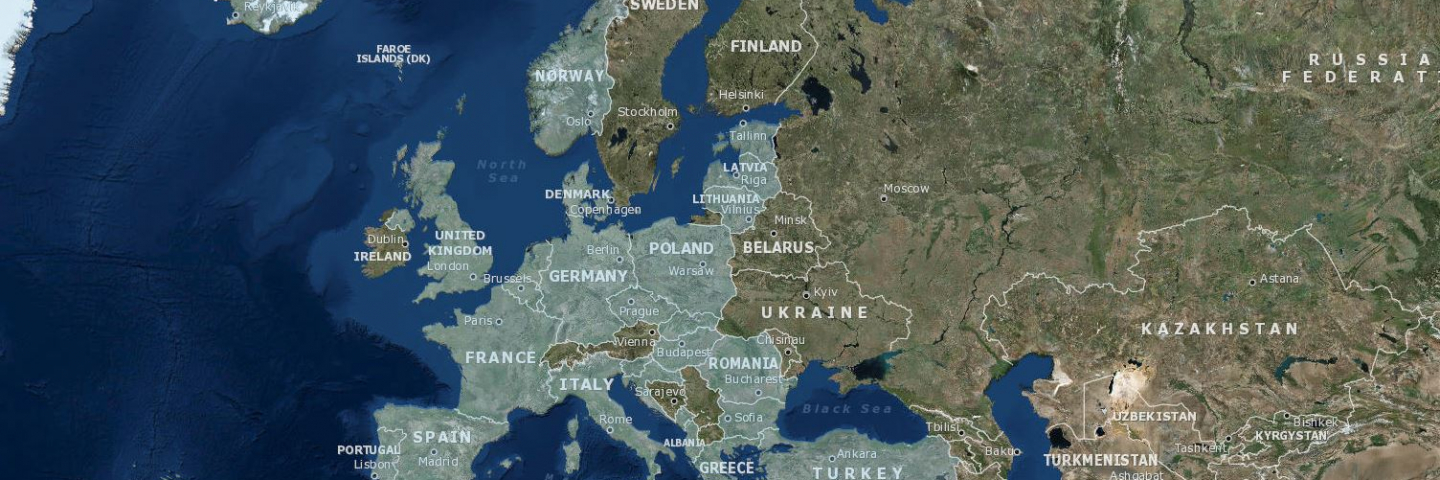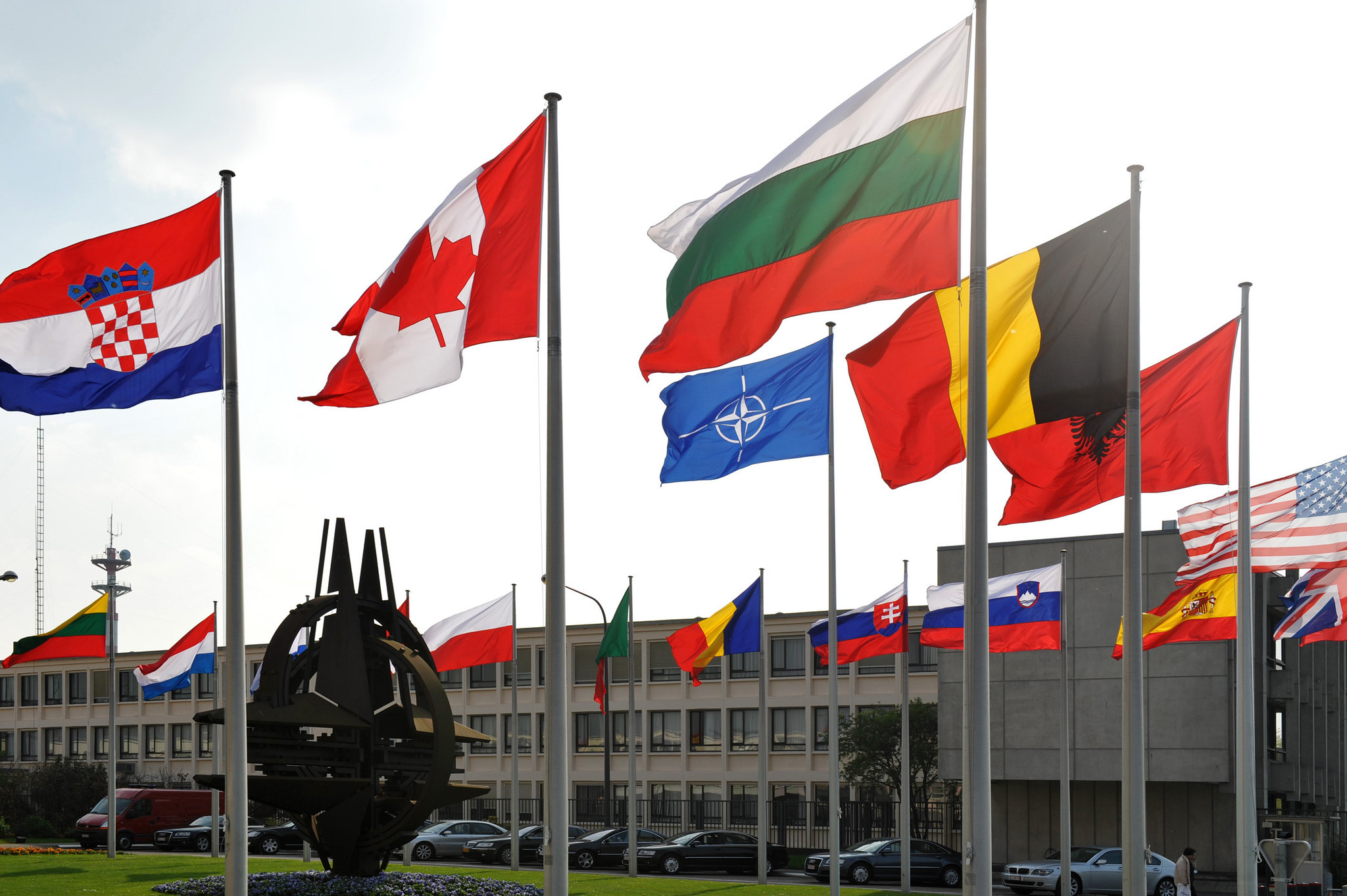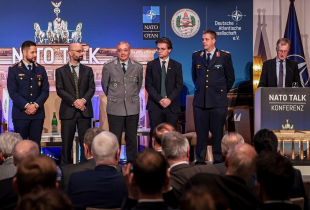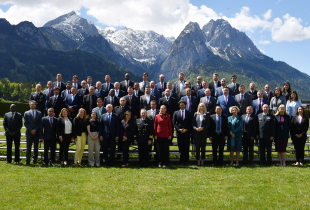
NATO Enlargement – Approaching a Standstill
Recommendations
- For a considerable time to come, there are only two viable candidates for NATO accession, and even they face severe challenges in terms of state viability (Macedonia) and domestic support for enlargement (Montenegro). Once their accession is agreed upon, enlargement will either move onto the backburner or, pressing ahead, provoke serious disputes about the preparedness of individual candidates. Thus, NATO enlargement is approaching a standstill, thereby stimulating a debate about its finalité.
- Because of the consensus rule, NATO can neither follow the maximalist position of granting Ukraine and Georgia a MAP (or even moving NATO’s membership beyond Europe), nor end enlargement altogether, which would reopen the security dilemma in Eastern Europe. The balancing act ahead, then, is how to convey a sense of progress in order to keep the candidates on the reform track without prematurely extending the collective defense commitment.
- The new Strategic Concept presents the opportunity of reorienting the pre-accession strategy. A “wait-and-see” approach, albeit tempting, could prove counter-productive. How long the window of opportunity will stay open – particularly regarding the strategic orientation of Georgia, Serbia, Ukraine, and Russia – remains unknown. Yet, “losing” even one of these states would be unacceptable.
- NATO must adopt a pro-active approach that more clearly spells out the organization’s conditionality while designing new intermediate steps on the path to membership. The membership perspective needs to be powerful enough to mobilize painful reforms for many years to come; this will only occur if the final stages of the pre-accession process are further broken down into steps that are both performance-oriented and reform-stimulating.
- This article proposes a “package deal” that includes four elements:
- A reaffirmation of the right of every country to freely choose its alliance;
- A declaration that NATO enlargement has geographic limits and will stop in the Caucasus;
- A new category of associate members who, although not prepared to join NATO, are afforded privileged access to NATO bodies with the goal of successive integration into NATO structures based on performance; and
- A new category of associate partners outside the perimeters of enlargement, which contribute significantly to NATO missions and therefore enjoy institutionalized access to NATO bodies and decision-making.
Zbigniew Brzezinski coined the term “double enlargement” in the 1990s, i.e. the expansion of mission and membership, to capture the new raison d’être of the North Atlantic Alliance in the post-Cold War era. It envisaged Eastern enlargement as one of the two main purposes of NATO following the demise of the Warsaw Pact; the other was crisis response.
In recent years, cracks have appeared in both tracks, leading many critics on both sides of the Atlantic to doubt NATO’s continuing relevance as the premier Euro-Atlantic security institution. While the fissures in the mission track, such as the national caveats in Afghanistan, are widely debated, those in the enlargement track are just surfacing. The discord during the Bucharest Summit of April 2008 surrounding the future enlargement strategy, which centered on whether to grant a Membership Action Plan (MAP) to Georgia and Ukraine and whether to extend an invitation to Macedonia in the face of Greece’s veto, did not bode well for the debates to come. The divergent lessons of the Georgian war of August 2008 regarding future enlargement to the Caucasus have brought the issue to the fore. Wisely, it was removed from the table when the Heads of State and Government met in Kehl and Strasbourg last May.
This article argues that enlargement no longer runs on its own steam. Instead, the Alliance is approaching a standstill in both geographic dimensions of enlargement, the East (Georgia, Ukraine) and the South East (Balkans). NATO will either opt for a de facto suspension of enlargement for an indefinite time to come, or it will face divisive internal debates over the quality of the next candidates and the timing of pre-accession steps. This imminent fork in the road calls for a serious review of the fundamentals of NATO enlargement and for innovative proposals to manage the time ahead. The crafting of the new Strategic Concept presents an opportune moment to address these challenges. The goal should be to design a future pre-accession strategy that is consensual within the Alliance, while reassuring to our partners and friends. In the end, devising different categories of associate membership, similar to that of the Western European Union, though leaving open the option of moving from one category to another, might be the least costly way out.
Drivers of Enlargement
So far, there are three key drivers of enlargement: candidate preparedness, strategic context, and Alliance consensus. Each has become ever more demanding.
- As to preparedness, Article 10 of the NATO Treaty stipulates that new members should “further the principles of this Treaty and contribute to the security of the North Atlantic Area.” How normative conformity and added value to Alliance security are to be assessed can be debated. With democratic transformation in Eastern Europe proceeding and NATO missions unfolding, the focus has shifted from political considerations to military preparedness. Whereas in the first round (1999), democratic deficits prevented some states from receiving a membership invitation, today’s principal yardstick is whether the applicants are net security providers. Thus, for example, the longstanding weak domestic support for NATO, which generated doubts regarding Croatia’s preparedness to contribute to and sustain NATO missions, was the most serious obstacle for the country before its accession this year.
- Strategic context significantly influences both the timing of the enlargement process and the choice of candidates. Russia does not represent the sole contextual factor. For instance, 9/11 helped trigger the “big bang” enlargement of 2004, since the Bush administration was anxious to win new allies in the fight against terrorism. However, there is no question that Russia, although possessing no formal veto, has strongly shaped the enlargement calculus. The first two enlargement rounds were delayed pending an upgrade of NATO-Russia relations designed to alleviate Russian concerns (the Founding Act of May 1997 and the NATO-Russia Council of May 2002). Geostrategic arguments prevented invitations to the Baltic states in the 1999 round. Today, the Russian factor has become seminal. First, Russia has turned both more nationalist and more self-confident – crossing its “red lines” is riskier, as illustrated by the Georgia intervention. Second, the more NATO enlargement approaches Russian borders, the more the intra-Alliance split over Russia complicates enlargement. Concern over energy dependence does not lie at the heart of the debate. Rather, the key determinant is divergent perceptions of Russia as a threat and/or partner and the legitimacy of Russian concerns and policies. The fusion of the enlargement and the Russia debates within the Alliance makes progress on enlargement into Russia’s neighborhood not only increasingly controversial, but also less likely. In great part, these obstacles are tied to the third point, the need for consensus among the Allies.1
- Consensus on any enlargement decision is clearly essential; it is equally difficult to achieve. NATO’s “expectations,” as laid down in the Study of Enlargement of 1995, are inherently vague, leaving much space to pursue national agendas. France was the patron of Romania at the Madrid Summit of 1997, as the U.S. was for Slovenia. Both failed to gain approval for their candidates, as did the U.S. regarding the MAP for Georgia and Ukraine in 2008. Conflicting preferences matter in an unanimity-driven organization in which each member, no matter how small, is a potential veto player who can take enlargement hostage for other purposes. Greece’s blocking of Macedonia’s accession is a case in point. Thus, a debate about overstretch inevitably set in as the Alliance grew from 16 to 28 members, with four more Balkan states, Ukraine, and Georgia standing in line. As membership grows, decision-making becomes more arduous and lowest common denominator policies spread, increasing the risk of deadlock. A debate on revising the consensus rule in 2003 proved short-lived; it will probably be a non-starter. The result is a growing temptation to work around the Alliance by forming informal ad hoc coalitions or relying on bilateral (or even unilateral) solutions, thereby rendering the Alliance increasingly superfluous.

Secessionism
As is evident, the numerical and geostrategic logic of enlargement suggests that NATO’s enlargement ship is likely entering rough waters. One other complicating factor, absent in the three post-Cold War enlargement rounds so far, infuses future accession with a structurally different quality: secessionism. Almost all of the candidates on the horizon harbor, to varying degrees face, unresolved territorial claims based on inter-ethnic strife. In most cases, secessionist ambition looms large (Western Macedonia, Southern Serbia, Republica Srpska and Herzegovina, Mitrovica, Crimea); in others, de facto secession has already occurred (Abkhazia, Southern Ossetia, Kosovo, Montenegro). Irrespective of their legitimacy, the consequence is ethnic segregation and chronic state weakness within and among almost all of these states. Actors engaged in secessionist strife follow a logic that differs from that of external observers. Only in the case of Montenegro did the seceding territory gain approval nationally and internationally.
A cursory glance at the individual candidates demonstrates clearly why fundamental doubts exist as to whether most can be deemed net security providers for the Alliance in the decade to come.
- According to most analysts, the Serb minority (one third of the population) in Montenegro which uni sono and strongly rejected the referendum for independence in 2006, has now accepted the new state. Although they overwhelmingly oppose NATO membership (only 32.9 percent of the Montenegrin population favors it, according to a 2007 poll), Montenegro’s defense reforms and transatlantic orientation make it a viable candidate for midterm membership.
- The same is true for Macedonia, despite the deep concerns of many regional experts about Macedonia’s state viability, specifically the continuing segregation of Albanian and Slavic Macedonians and the looming secessionist ambitions in Western Macedonia.
- In the Western Balkans, most problematic are Bosnia, Serbia, and Kosovo. As to Bosnia, the root cause of the current constitutional crisis is the lack of Serb and Croat allegiance to the shared state, exacerbated by unconcealed secessionist rhetoric in Pale. This has resulted in a degree of ethnic polarization and a breakdown of the power-sharing mechanisms which, fourteen years after Dayton, calls into doubt the very existence of Bosnia. There is a pending U.S. Senate resolution for an early accession of Bosnia to NATO; three former High Representatives (Paddy Ashdown, Wolfgang Petritsch, and Christian Schwarz-Schilling) also support accession. However, a consensus membership invitation under the current circumstances, which would imply watering down NATO conditionality considerably, is hardly conceivable.
- Serbia surely remains pivotal for Balkan stability, a fact which explains NATO’s unmistakable courting of that country. However, as a result of the legacy of NATO’s 1999 air campaign and the recognition of Kosovo independence in 2008, domestic discourse in Serbia will remain highly critical of NATO for the time being. Furthermore, Serbia is unlikely to qualify for NATO membership unless Belgrade revises her revisionist claim on Kosovo and accepts at least a modus vivendi similar to the German Ostpolitik of the 1970s.
- Kosovo itself, which is recognized by only 62 out of 192 UN member-states (as of July 2009), will likewise remain beyond NATO membership as long as the territorial dispute, the concomitant danger of partition, and the troubling Serb minority situation are unresolved.
- Turning to the Caucasus, Georgia’s membership prospects have suffered further from the causes-of-war debate. Fears of Georgian adventurism and the frozen status of the breakaway territories are not just restraining the Allies from effectively bringing Georgia up to NATO standards and equipping it for selfdefense; they also stimulate the widespread assumption that Georgia’s accession to NATO has to be postponed into an unforeseeable future.
- Finally, Ukraine’s NATO perspective is dim because of her fundamentally split identity (reflected in the fact that only one third of the population favors NATO accession, the looming secessionist conflict (Crimea), and her proximity to Russia.
Such structural factors tend to be persistent, with external actors, including NATO, unable to exert much leverage over them. At the heart of the secessionist challenge are territoriality and border delineation, issues which lie at the core of NATO’s collective defense commitment. NATO’s 1995 Enlargement Study stressed
States which have ethnic disputes or external territorial disputes, including irredentist claims, … must settle those disputes by peaceful means in accordance with OSCE principles. Resolution of such disputes would be a factor in determining whether to invite a state to join the Alliance.
The lack of predictability translates into potential backdoor commitments once the Article 5 commitment is extended to these countries. On Ukraine and Georgia, this backfire logic merges with the Russia debate mentioned above; in the Balkans, at least, the Russian factor is largely absent.
This plethora of complex obfuscatory issues, especially the multitude of unresolved and interlinked territorial disputes in the Balkans and the Caucasus, makes it likely that NATO enlargement will soon reach a standstill. Of course, the new Strategic Concept will reaffirm NATO’s open door in principle. But there are simply no viable candidates in the pipeline beyond Montenegro and Macedonia, nor are there any memberstate patrons supporting the accession of the countries mentioned any time soon. Very few would risk moving from a policy of stabilization before integration to stabilization through integration. For the time being, enlargement will move to a backburner, as doubts grow about the added value of further enlargment. Finally, the EU debate about enlargement’s geographic finalité, which began in 1999 when granting Turkey candidacy status, might also consume the Alliance.
Policy Options
There are two poles in the enlargement debate. The maximalists still campaign for a Georgian and Ukrainian MAP soon, support enlargement beyond the geographical borders of Europe (Senator Lugar), and warn of “timidity towards Russia” (Ron Asmus). Others even favor transforming NATO into a collective security organization by including Russia. Since the Russo-Georgian war, however, the minimalists, especially in Europe, dominate the debate. There is a “creeping sense that enlargement – particularly into the territory of the Soviet Union – may have reached its limits” (Brian Whitmore of Radio Free Europe).
The Catch-22 is that while the maximalist position will not gain consensus within NATO, the minimalist perspective perpetuates the “security dilemma” (Andrew Michta) in Eastern Europe.
An indefinite freeze of the status quo or an explicit full stop on enlargement risks not only antagonizing those who embrace the core NATO norms, but also fosters instability by stimulating emotive responses such as resurgent nationalism, authoritarianism and territorial adventurism, Russophobia and Russophilia.2
How can we reassure these candidates and keep open the option of anchoring them in our security institutions? It is obvious that a “wait-and-see” policy evades the dilemmas. Simply muddling through while waiting for better days is most detrimental. One cannot foresee how long the window of opportunity will remain open. NATO has already miscalculated on Georgia, Croatia (the reconquest of Krajina and Slavonia in 1995), and Macedonia (the armed uprising in 2001). Russian political culture (and, consequently, its foreign and security policy) will continue to evolve, and we have only limited leverage over its vector. The case of Turkey, which signed the association agreement with the EU in 1963 but still has no unambiguous membership assurance, remains a visible reminder of the downsides of a “wait-and-see” policy.
What is needed is a pro-active approach, which aims at further stimulating domestic reform in our partner countries. The longer the period of standstill, the more we have to devise viable incentives to back the domestic reform constituencies. The elites need strong arguments to counter those who urge alternative strategic orientations. The perspective of membership remains the most potent incentive for military restraint and democratic transformation. Since it cannot be extended for some time to come, NATO needs to design new intermediate steps, particularly at the upper end of the “PfP ladder,” which more closely associate the countries with the Alliance without extending a collective defense assurance. This includes clearly communicating NATO’s lines in the sand in terms of territorial adventurism. Of course, the Alliance must bear in mind that the EU will have to shoulder the lions’ share of transformation and crisis management, at least in the Russian “orbit.”
In terms of membership, the new quality of the enlargement challenge requires out of the box thinking. So far, NATO has taken three fundamental decisions. First, it devised and subsequently diversified a staged process of rapprochement of potential candidates towards NATO, which starts with signing the PfP “Framework Document” and participation in the Euro-Atlantic Partnership Council (EAPC) and leads via “Individual Partnership Plans” (IPPs) and MAPs to accession negotiations and membership. With the 2004 and 2008 enlargement rounds, PfP membership fundamentally changed its character. Second, realizing the insufficiency of PfP, NATO individualized cooperation with some regions (Mediterranean Dialogue, Istanbul Initiative) and states (NATO-Russia Council, NATO-Ukraine Commission, NATO-Georgia Commission). Third, in contrast to the EU (associated members, Schengen, Monetary Union, etc.), the Alliance has ruled out any differentiation in membership status and voting rights. In particular, NATO members have declined to seriously discuss the option of replacing the consensus rule with a form of majority voting, as the EU increasingly does with “qualified majority voting,” to alleviate the effectiveness problems caused by growing membership. That said, majority ruling on vital security issues is unimaginable for the immediate future.
In light of the impossibility of offering membership to any country in which statehood is contested, NATO needs to revisit these issue and devise a more sophisticated pre-accession strategy in the new Strategic Concept.
This pre-accession strategy might consist of a package of closely linked measures:3
- First, NATO should unequivocally reaffirm the right of every country to freely choose its alliances, as stipulated in the CSCE Charter and the Charter of Paris.
- Second, in order to avoid overstretch, maintain NATO’s capacity to act, and reassure Russia, the Allies should declare that NATO enlargement indeed has geographic limits and that NATO will stop where the Euro-Atlantic area ends, in the Caucasus. All the countries ranging from the Balkans to Georgia, including Moldova and Belarus, would remain in principle eligible for NATO membership.
- Third, in order to avoid impressions of exclusion and intensify partnership with those who vitally contribute to Alliance missions, NATO should adopt a policy of status differentiation similar to that of the WEU, including associate members and associate partners. Those within the perimeters of NATO enlargement who are not yet prepared for accession would become, if they so wish, associate members that are gradually socialized within NATO. They can cooperate with NATO on an increasing number of selected projects and gain privileged access to NATO bodies, including the Council, where they participate on an increasing, individually arranged number of issues. Voting rights would be reserved, though, to full members, as would the Article 5 guarantee. How quickly associate members proceeded along the path to full membership would depend on performance, particularly on democratization, contribution to NATO missions, and resolution of territorial disputes by peaceful means. Conditionality gains greater importance in this scheme.
- Those beyond NATO, including key “global partners” such as Australia or Japan, would become associate partners. They would enjoy institutionalized and permanent access to NATO bodies and decisionmaking, particularly on mission planning and execution. Their access, though, would remain issue-limited.
Such an approach would serve several purposes. It would offer potential future members gradual, tailormade, and performance-based integration into NATO structures, without automaticity, thus incentivizing moderation and reform, while alleviating the growing concerns of exclusion. It would afford reassurance that NATO will not “encircle” Russia, but equally make clear that NATO does not accept a Russian droit de regard on any candidate. It would allow the U.S. administration to more intimately associate “global partners” with the Alliance, while retaining NATO’s effectiveness and thus relevance as a consensus-based organization. The proposal would clearly demonstrate to the Europeans that they retain a pivotal voice in a globalizing Alliance and that their theater remains the backbone of the Alliance. And it would calm East European angst as to Russia’s leverage over NATO and its fear of being marginalized within the American global design. Ultimately, we might end up not only overcoming the approaching standstill on enlargement, but also opening up the possibility for a renaissance of the Atlantic Alliance.4
For Academic Citation
Rafael Biermann, “NATO Enlargement – Approaching a Standstill,” Marshall Center Security Insight, no. 4, December 2009, https://www.marshallcenter.org/en/publications/security-insights/nato-enlargement-approaching-standstill-0.
Notes
1 “Study on NATO Enlargement,” NATO OTAN, last modified 05 Nov, 2008, https://www.nato.int/cps/en/natohq/official_texts_24733.htm?.
2 Ronals D. Asmus, “Europe's Eastern Promise. Rethinking NATO and EU Enlargement,” (Foreign Affairs, 87:1, 2008) 95-106.
3 “NATO at 60: Has Expansion Reached its End?,” Radio Free Europe Radio Liberty, last modified April 03, 2009, https://www.rferl.org/a/Has_NATO_Expansion_Reached_Its_End/1565285.html.
4 Andrew A. Michta, “NATO Enlargement post-1989: successful Adaptation or Decline?” In Contemporary European History, 363-376. Cambridge University Press, 2009.
About the Author
Dr. habil. Rafael Biermann was the Deputy Dean (GE) of Academics at the George C. Marshall European Center for Security Studies.
He joined the Marshall Center in January 2009. His career combines academic and political assignments. Politically, Dr. Biermann worked for the German Chancellor during the unification process in 1990/91 and in the Policy Planning Staff of the German MoD from 1995 to 1999. Academically, Dr. Biermann holds a Master of Arts from Cologne University in Political Science, History and German literature. His PhD in International Relations at Bonn University concentrated on German unification, specifically Soviet policy, his ‘Habilitation’ on international crisis prevention in Kosovo.
Before joining the Marshall Center, Dr. Biermann was a Visiting Professor teaching International Security at the U.S. Naval Postgraduate School in Monterey, CA. His area of expertise covers international organizations, third-party intervention in conflicts, transatlantic relations, and ESDP. His regional focus is on South Eastern Europe and the Caucasus
The Marshall Center Security Insights
The George C. Marshall European Center for Security Studies in Garmisch-Partenkirchen, Germany, a German-American partnership, is committed to creating and enhancing worldwide networks to address global and regional security challenges. The Marshall Center offers fifteen resident programs designed to promote peaceful, whole of government approaches to address today’s most pressing security challenges. Since its creation in 1992, the Marshall Center’s alumni network has grown to include over 13,715 professionals from 155 countries. More information on the Marshall Center can be found online at www.marshallcenter.org.
The articles in the Security Insights series reflect the views of the authors and are not necessarily the official policy of the United States, Germany, or any other governments.

